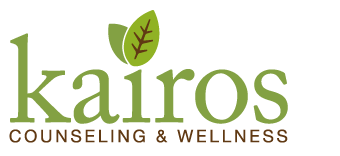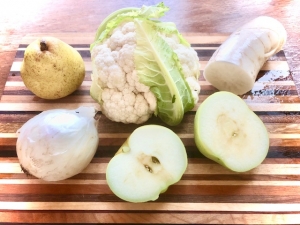EATING FOR AUTUMN: OPTIMIZING LUNG AND LARGE INTESTINE HEALTH
EATING FOR AUTUMN: OPTIMIZING LUNG AND LARGE INTESTINE HEALTH
Ah… autumn is in full swing which means changing leaves, cool, crisp days and all the pumpkin spice you can handle.
According to Traditional Chinese Medicine (TCM), the season of autumn is an opportunity to intentionally nourish and detoxify the lungs and large intestine. And whew! With a global pandemic, cold and flu season around the corner and unprecedented wildfires and smoke in the Western US there couldn’t be a better time to focus on the health of these vital organs!
The lungs and large intestine both share the functions of taking in nourishment via water and oxygen or nutrients and filtering out toxins that don’t serve us. When these organs are in a state of dis-ease, respiration and elimination are often impaired, and the immune system can become weakened leaving us susceptible to pathogenic invasions, cancers and autoimmune conditions. Yikes!
Since food can be such incredible DAILY medicine, what follows are some general guidelines to optimize lung and large intestine health, that will also benefit your overall well – being!
5 FOOD GROUPS TO FOCUS ON:
- Pungent Flavors: radishes, onions, garlic, hot peppers, horseradish, ginger
Pungent or spicy flavors have a dispersing or moving nature and can help to break up and clear out excess mucous and phlegm. If left unchecked phlegm can impede proper organ function and provide a breeding ground for pathogenic bacteria, viruses and fungi. In TCM the lungs are said to “open” to the nasal passages and radishes, horseradish and ginger are especially helpful at relieving sinus congestion. These can be grated and added to food or juiced for extra potency. Use these and hot peppers with caution if you tend to have a “hot” constitution (red face, chest, sweat easily) or excessively dry throat. Regular consumption of the particularly pungent allium family, that includes garlic, onions, leeks and chives has been associated with significant reduction in cancers of the esophagus, stomach and colon, lung, breast, pancreas and prostate. With the incidence of various cancers on the rise, be sure to include these tasty, sulfur rich foods on a daily basis!
- White Colored Produce: daikon radish, turnips, white fleshed fruits such as apples and pears, onions, garlic, white pepper and mushrooms
According to TCM, white is the color associated with the autumn season and interestingly, if you explore your local farmers market, many white or white fleshed foods can be found this season. Apples and pears have the ability to mitigate dryness that often accompanies the season and are rich in pectin, a soluble fiber that helps feed beneficial gut bacteria, normalizes digestion and aids in detoxification. These fall favorites are also rich in antioxidants such as quercetin that reduce inflammation and slow aging and their skins contain valuable insoluble fiber…so leave those peels on! Turnips are high in immune boosting Vitamin C, rich in fiber and as a cruciferous vegetable have been linked with cancer prevention. While Shitake and Maitake mushrooms are well known for their immune supportive beta glucans, the more commonly found Crimini or white button mushrooms are also wonderful choices. These little guys are an affordable and excellent source of immune supportive Vitamin D and are rich in trace minerals, B vitamins, fiber and protein. Consider adding to your next soup, stir fry or simply as a meat alternative.
- Cruciferous and Orange Root Vegetables – cauliflower, broccoli, cabbage, brussels sprouts, kale, turnip and mustard greens, carrot, pumpkin and winter squash
Vegetables in both of these categories are rich in protective antioxidants such as beta- carotene which helps to nourish healthy mucosal membranes, boost immune function and has been linked to the reduced incidence of both lung and colon cancers. The green cruciferous veggies are also rich in chlorophyll and sulfur compounds which help to inhibit viruses and aid the body in detoxifying harmful chemicals that are ingested, inhaled or absorbed on a daily basis. Boost your capacity to cleanse naturally by adding in at least one cruciferous vegetable per day, ideally steamed or sautéed rather than raw to optimize absorption. Pumpkin, carrots, and other squashes are strengthening to the digestive tract and help to regulate bowel movements. They may be easily prepared by baking or consider utilizing them either chopped or puréed in soups for a delicious autumnal meal.
- Mucilaginous Foods: seaweeds, flaxseed, okra, slippery elm and marshmallow root
For proper function, the lungs and large intestine both require the maintenance of a light, and moist protective mucosal coating. The mucous layers that line our respiratory and digestive systems act as protective barriers from pathogenic or toxic substances that can be taken in via air, water or food. Supporting mucosal health protects not only the health of the lung and large intestine but also our entire bodies. Foods that are rich in mucilage have the ability to sweep out old and pathogenic mucous and help to restore a clean and healthy mucosal layer. These foods are likely less common in your diet so try working them in via the following suggestions. Seaweeds can be added to soups or eaten as a snack, flax seed can be ground and added to oats, okra is a natural thickener for soups (think gumbo!) and slippery elm and marshmallow root can be purchased raw or found in many prepared organic teas.
- Fiber Rich Foods: fruits, vegetables, nuts, seeds, legumes, whole grains
Fiber is found only in plants and is interesting in that while it is indigestible by our bodies, it plays a critical role in human health. Almost all plant foods contain both soluble and insoluble fiber that occur in varying proportions. Soluble fiber dissolves in water and is helpful in maintaining normal cholesterol and glucose levels and is found in foods such as apples, citrus, carrots peas, oats, garlic and onions. In addition, soluble fiber plays the vital role of feeding beneficial gut bacteria which aid in nutrient assimilation, hormone and immune modulation, cancer prevention, regulation of inflammation and maintenance of healthy weight. Insoluble fiber is found in the bran of grains and plant cell walls, does not dissolve in water, helps to create the bulk of stool and to regulate normal movement through the digestive tract. Studies indicate that high fiber diets have value in preventing various cancers, diabetes, heart conditions and are helpful in maintaining a healthy weight. To maximize the health benefits of fiber, shoot for 30g/day of a mix of insoluble and soluble fibers. To get started you might utilize a fiber calculator to see how much fiber you are already getting per day. If you fall short consider slowly adding in high fiber sprouted legumes for one meal or mix in ground hemp, flax, nuts or seeds to your oatmeal or salad or switch out white rice for quinoa. In general, the more you can stick to an unprocessed plant – based diet the more easily you’ll reach the 30g/day mark and reap the health benefits of fiber!
FOODS TO MINIMIZE OR AVOID
- Refined Sugars, Pocessed and Fried foods, Alcohol
These “party foods” are all inflammatory in nature and tend to cause the production of pathogenic mucous and suppress immune function. In addition, these essentially “dead foods” contain little to no nutrition and cause a net loss of nutrients as they require B vitamins, zinc and minerals in order to be digested. If these foods make up more than 20% of your diet, consider swapping out one processed meal per week with an unprocessed vegetable – based meal to start. Or for a larger step, consider limiting these foods and alcohol to just the weekends or special occasions. Even small steps can help to reduce your inflammatory load and benefit your overall health today!
- Animal Dairy
Dairy, especially pasteurized, can cause congestion and excess mucous production in some individuals. Telltale signs of an intolerance to dairy include sinus congestion, runny nose, headache, phlegm that can’t be cleared from your throat or digestive disturbances. If you are still inclined to eat dairy, consider raw (unpasteurized) forms or fermented products such as unsweetened yogurt of kefir that still contain enzymatic activity and beneficial bacteria respectively. You might also consider sourcing goat or sheep -based products as their proteins are more similar to those found in human milk and tend to cause less reactivity. For a more sustainable alternative, there are also a wide variety of plant- based yogurts and milks that may be more easily digested and tolerated. If you’re lost and don’t know where to look, the suggested alternatives above can be often found at your local health food store or farmers market.
- Non – Organic and Grain Fed Animals
Animals, including humans, store toxins in their fat. Therefore, when we consume conventionally raised (non -organic) meats we end up taking in whatever toxins were stored in that tissue such as antibiotics, hormones, chemicals and pesticides. Since the goal is to help aid detoxification and not impede it, be intentional to choose 100% organically fed animals. Also opt for animals that are 100% grass fed or wild caught fish from sustainable sources as they contain anti-inflammatory Omega -3 oils linked with a myriad of health benefits. Conversely, grain fed animals contain high amounts of pro- inflammatory Omega -6 fats that when consumed in excess have been linked with increased incidences of diabetes, obesity, heart disease, arthritis, autoimmune conditions, mood disorders and cancer. Yikes! For a more cost- effective, sustainable and health boosting alternative you might also consider substituting a fiber rich, plant -based protein such as lentils for one meal a day or week. Think hearty lentil soup, three bean chili or black bean tacos!
ALLOWING NUTRITIONAL DETOX TO LEAD THE WAY …
As you eat to nurture your lungs and large intestine, note that their physiology is a reminder that autumn is a season of refinement for not just body but mind and spirit as well. A call to create life giving rhythms that filter out obstacles to healing and embrace what serves to nourish us and create well -being amidst turbulent times. So, as you take in dietary nourishment you might consider what specific activities, places, people, readings, meditations nourish your soul? And similarly, as you notice your body’s processes of elimination, what patterns, habits or unhealthy relationships are you being invited to let go of in this season?
FOR FURTHER ASSISTANCE:
Please note that the information listed above is not intended to diagnose or treat. To set up a consultation to determine the most applicable dietary protocol for your constitution you may contact Dr. Schmidt here…. https://kairoscw.com/bianca-schmidt/
REFERENCES
Donaldson, M. S. (2004). Nutrition and cancer: a review of the evidence for an anti-cancer diet. Nutrition journal, 3(1), 19
Elizabeth, L., Machado, P., Zinöcker, M., Baker, P., & Lawrence, M. (2020). Ultra-processed foods and health outcomes: a narrative review. Nutrients, 12(7), 1955.
Hanson, C., Lyden, E., Rennard, S., Mannino, D. M., Rutten, E. P., Hopkins, R., & Young, R. (2016). The relationship between dietary fiber intake and lung function in the National Health and Nutrition Examination Surveys. Annals of the American Thoracic Society, 13(5), 643-650.
Pitchford, P. (2002). Healing with whole foods: Asian traditions and modern nutrition. 3rd ed., rev., updated, and expanded. Berkeley, Calif.: North Atlantic Books.





